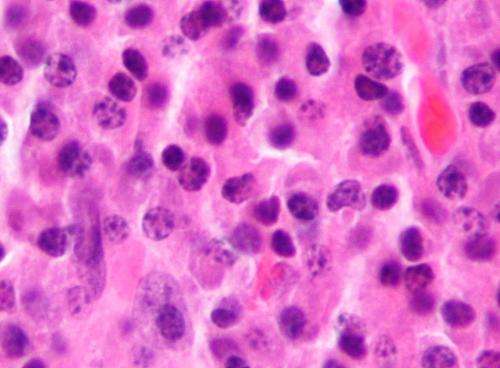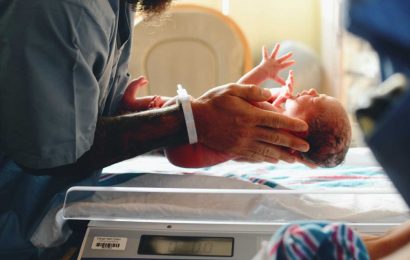
Low representation of minority groups in public genomic databases may affect therapy selection for Black patients with cancer, according to new Mayo Clinic research published in npj Precision Oncology.
The researchers investigated the use of genomic databases and found that tumor mutation burden was significantly inflated in Black patients compared to White patients.
As a result of the study, clinicians who are using public genomic databases need to be aware of the potential for inflated tumor mutation burden values and how that may affect therapy selection and outcomes, especially for patients from underrepresented groups.
Clinicians use biomarkers, which are indicators of a disease or condition, to determine whether patients might benefit from immunotherapy, a type of treatment used to treat cancer. One of those biomarkers is tumor mutation burden, the number of mutations within a tumor compared to normal cells. Most of the time that tumor mutation burden is calculated, normal cells are not used, and genomic databases of mutations or algorithms are used to filter results.
The research team collected data from 701 patients who were newly diagnosed with multiple myeloma, including 575 self-reported White patients and 126 self-reported Black patients. The team analyzed DNA from patients’ tumor cells and healthy cells to determine the differences. The team paired tumor and germline exome sequencing data to analyze differences between the two sources of DNA. Then they used public databases to filter mutation variants from the tumor sequencing data.
“Currently, the FDA has approved a threshold of more than 10 mutations per megabase of DNA to select patients to receive immunotherapy,” says Yan Asmann., Ph.D., a Mayo Clinic bioinformatician and first author of the study.
Immunotherapy with immune checkpoint inhibitors (a type of drug that blocks proteins called checkpoints) helps the body recognize and attack cancer cells and has dramatically improved patient survival with many types of cancer. However, since the autoimmune toxicities with these inhibitors can be severe, it is critical to have an accurate tumor mutational burden as a biomarker to improve the ability to predict the optimal treatment for patients. Tumor mutation burden is determined by counting the number of changes in the DNA of a patient’s tumor.
“Determining tumor mutation burden becomes difficult when you do not have DNA from a patient’s normal cells,” says Aaron Mansfield, M.D., a Mayo Clinic medical oncologist and corresponding author of the paper. “For this reason, reference genomes are used for comparisons to tumors to estimate the burden.”
Based on Dr. Mansfield’s experiences with patients, he was concerned that this type of approach to determining tumor mutation burden was inaccurate, especially in patients with ancestral backgrounds that are not well-represented in the reference genome databases.
“At the level of an individual patient, our findings suggest that when we sequence tumors, it is also important to sequence paired normal tissues to accurately identify differences,” says Dr. Mansfield. “At the level of the research community, we need to continue to improve the representation of patients with diverse ancestral backgrounds in reference genome databases.”
According to Dr. Mansfield, accurate tumor mutational burden is particularly important in cancers currently treated with immune checkpoint inhibitors, including breast, bladder, cervical, colon, head and neck, liver, lung, renal cell, stomach and rectal cancers, as well as Hodgkin lymphoma, melanoma and any other solid tumor that is not able to repair errors during DNA replication.
“It needs to be recognized that we performed this proof-of-principle study in patients with multiple myeloma. However, the findings of racially disparate tumor mutation burden inflation might be generalizable to all cancer types,” says Dr. Mansfield.
The lack of representation of diverse backgrounds in genomic research is well-known. Of more than 60,000 people genotyped and sequenced, only 8.6% are of African ancestry, while 54.9% are of non-Finnish European ancestry.
Source: Read Full Article


